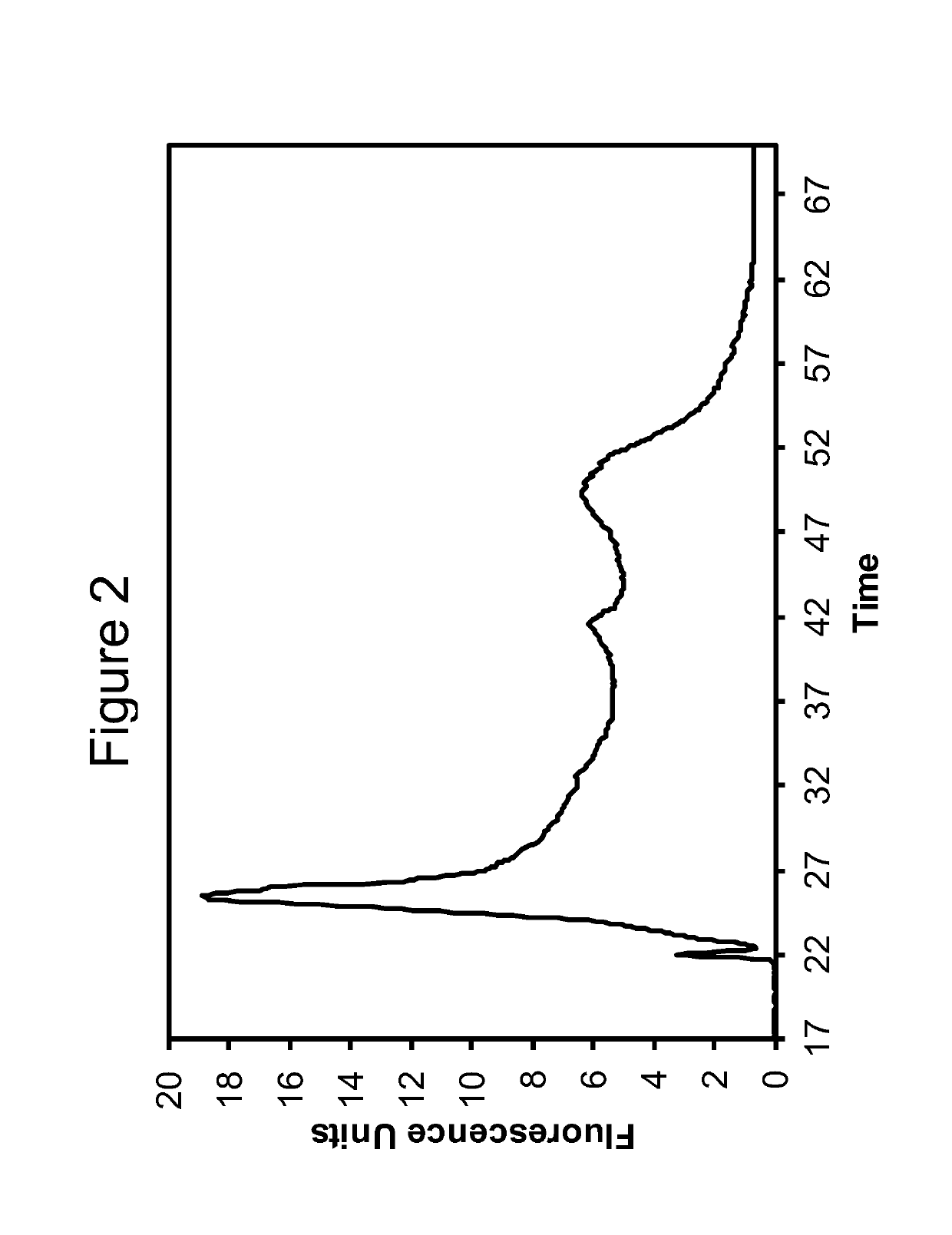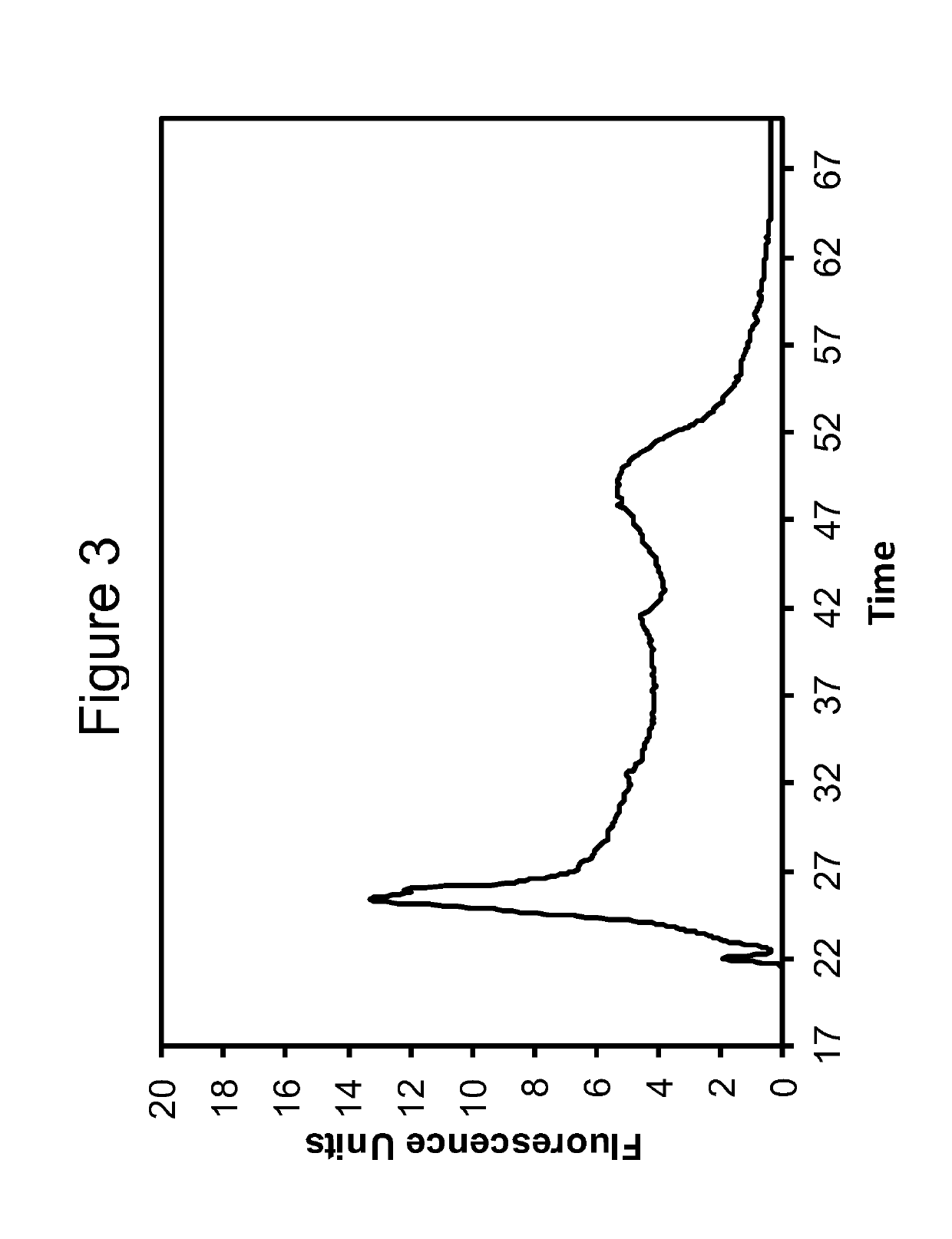Biomolecule processing from fixed biological samples
a biological sample and biomolecule technology, applied in biochemistry apparatus and processes, microbiological testing/measurement, organic chemistry, etc., can solve the problems of severe limitations on the types of studies that can be accomplished, poor quality and quantity of nucleic acids obtained from such specimens, and a significant challenge to the isolation of biomolecules for molecular analysis
- Summary
- Abstract
- Description
- Claims
- Application Information
AI Technical Summary
Benefits of technology
Problems solved by technology
Method used
Image
Examples
example 1
[0101]Two extractions of total RNA (labeled “Extraction 1a” and “Extraction 1 b”) were performed according to the methods of the invention. Using a microtome, 10 μm thick sections were obtained from a formalin-fixed, paraffin embedded tissue block and transferred to a 1.5 mL Eppendorf® DNA / RNA LoBind tube. Each section was incubated in 40 μL 5 mM (2Z)-2-methylbut-2-enedioic acid. After incubating for 30 minutes at 72° C., the tube was cooled briefly on ice. 120 μL of Lysis Buffer (all buffers named herein refer to Cell Data Sciences RNAStorm™ Extraction Kit buffers) was added along with 3.2 units of Proteinase K (0.8 units / μL) and the sample was incubated at 56° C. for 15 minutes. The sample was subsequently heated to 72° C. for 2 hours. Following the lysis step, the contents of the sample were placed on ice for 5 minutes and spun down. The supernatant was transferred to a silica filter spin column and 160 μL of Binding Buffer were added, followed by 450 μL 200-proof ethanol. After ...
example 2
[0103]The RNA obtained according to the method of Example 1 was analyzed using capillary electrophoresis (Agilent BioAnalyzer 2100, RNA 6000 Pico Kit). Electropherograms are shown in FIGS. 1-3. The data for RNA obtained using the Qiagen RNEasy FFPE Kit is shown in FIG. 1. FIGS. 2 and 3 show data obtained for Extraction 1a and 1b, respectively.
example 3
[0104]The DV200 value was calculated for each extracted sample according to the method described by Illumina, Inc. See e.g. “Evaluating RNA Quality from FFPE Samples”, Technical Note: RNA sequencing, Illumina. Pub No. 470-2014-001, Apr. 15 2014. While other metrics have been used, such as yields as measured by Qubit or Nanodrop, or integrity values such as the Agilent RNA Integrity Number (“RIN”), these have not been found to work well with degraded FFPE samples. The DV200 value is believed to offer a much better overall indication of the quality of extracted nucleic acids.
[0105]Specifically, a DV200 value represents the percentage of nucleic acids having a size greater than 200 nucleotides. A higher DV200 value is correlated with a better chance of success in subsequent applications such as RNA-seq or expression analysis. Generally, values greater than 70% indicate high quality samples; values between 50 and 70% indicate medium quality samples; values between 30 and 50% indicate lo...
PUM
| Property | Measurement | Unit |
|---|---|---|
| Temperature | aaaaa | aaaaa |
| Acidity | aaaaa | aaaaa |
| Acidity | aaaaa | aaaaa |
Abstract
Description
Claims
Application Information
 Login to View More
Login to View More - R&D
- Intellectual Property
- Life Sciences
- Materials
- Tech Scout
- Unparalleled Data Quality
- Higher Quality Content
- 60% Fewer Hallucinations
Browse by: Latest US Patents, China's latest patents, Technical Efficacy Thesaurus, Application Domain, Technology Topic, Popular Technical Reports.
© 2025 PatSnap. All rights reserved.Legal|Privacy policy|Modern Slavery Act Transparency Statement|Sitemap|About US| Contact US: help@patsnap.com



